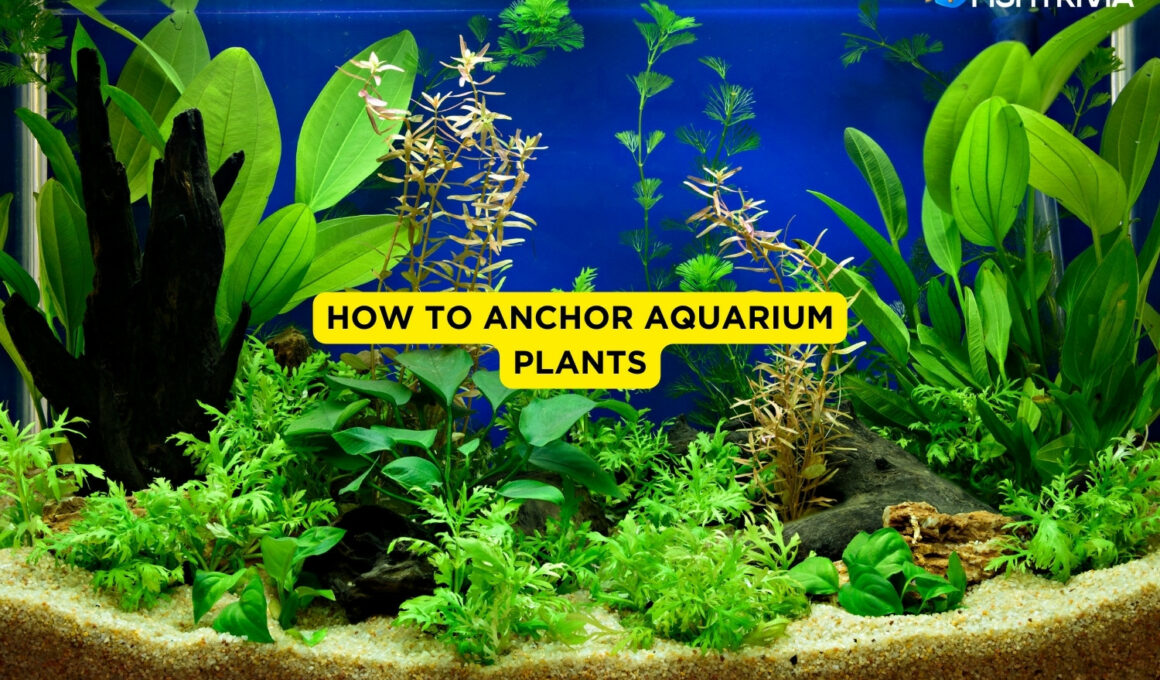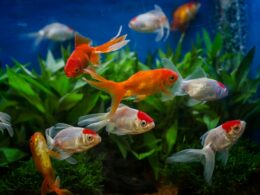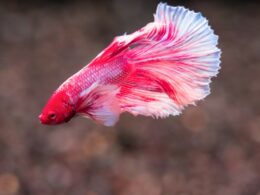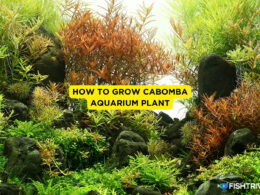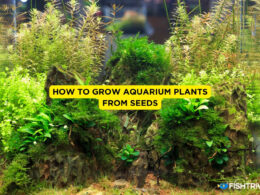In this article Show
The hobby of aquariums has reached a new level. Nowadays many organizations hold aquarium festivals. Aquarium owners never miss this kind of festival. This festival’s main purpose is to present new ideas, new decorations, new features, and most importantly, new aquarium fish.
Pet fish owners get new ideas for their fish tanks at home. They also get some new featured technologies capable of making their aquarium experience better.
Aquarium plants are one of the most beautiful decorations an aquarium owner can have. These plants come from many regions. Freshwater fish tank plants are an important part of the aquatic living environment.
Although some pet parents prefer artificial plants for their aquariums, their fake counterparts can’t offer environmental benefits by adding live aquatic plants.
But most of the time anchoring them leads the owner to great fuss. In many reports we have encountered, they use glue, even sometimes they use weight to keep them in place.
Keeping that in mind, the problem they face, here in this article we will discuss and try to cover everything about anchoring aquarium plants. Let’s get started.
Also worth reading;
- How to Prepare Lava Rocks For An Aquarium
- Can You Grow Aquarium Plants In Gravel? (Which Is The Best)
- Can Aquarium Plants Grow in Cold Water? What’s The Best Temperature
Types of Live Aquarium Plants
Your aquarium is only full after several live plants are in place. The storing of freshwater fish in your aquarium involves the set-up of your water tank so that your aquatic fauna can almost emulate the natural world. To decorate your aquarium with live plants you must know the types of live plants you can have.
1. Java Moss
It’s the first plant listed. Well, it is almost undestroyable. Java moss can be grown and preserved effectively by adding it to several surfaces, such as dirt, stone, driftwood, and decorations. Java Fern.

Thus it has a good chance of survival when linked to rocks or driftwood and even under low luminescent conditions can grow.
- Care Level Easy
- Color Green
- Max Size 7-8 Inch
- Light Level Low-Moderate
- Water Conditions 68-82° F, KH 3-8, pH 6.0-7.5
2. Cryptocoryne Beckettii
They turn dark brown, their leaves are violet on the bottom. The leaf color and shape, like many other Cryptocorynes, depend mainly on atmospheric conditions in the aquarium.
The presence of this aquatic plant can all be affected by colder waters and higher lights. Water trumpet was also known, and the plant is a large mid-earth plant. It is very waterproof and good in low to medium light. It is tolerant.
- Light Required: Low to Moderate
- Growth Rate: Slow
- Ideal Water Parameters: 72 to 82°F, pH 5.5-8.0, KH 1-20
- Difficulty: Easy once established
3. Lilaeopsis
Lilaeopsis is a shorter-sided plant that performs well as a mounding plant, also known as the Brazilian Micro Swords. It can grow fully or partially submerged and forms a thick tapestry with the right illumination, CO2, and other nutrient mixes.
Create tiny tufts while planting and place them into the field a few centimeters apart, since the plants will more easily shape an uninterrupted marsh. There should be no shade in the plant area so that plants get adequate light. Even ideal for the garden tank and the low salinity of a brackish aquarium is accepted.
- Temperature tolerance 4 – 28°C
- Carbonate hardness 2 – 14°dKH
- General hardness 0 – 30°dGH
- Propagation Runners, Splitting, cutting off daughter plants
4. Amazon Sword
Lilaeopsis is a shorter-sided plant that performs well as a mounding plant, also known as the Brazilian Micro Swords. It can grow fully or partially submerged and forms a thick tapestry with the right illumination, CO2, and another nutrient mix.
Create tiny tufts while planting and place them into the field a few centimeters apart, since the plants will more easily shape an uninterrupted marsh. There should be no shade in the plant area so that plants get adequate light. Even ideal for the garden tank and the low salinity of a brackish aquarium is accepted.
- Light Required: Moderate
- Growth Rate: Moderate
- Ideal Water Parameters: 72 to 82°F, pH 6.5-7.5, soft to moderately hard
- Difficulty: Easy
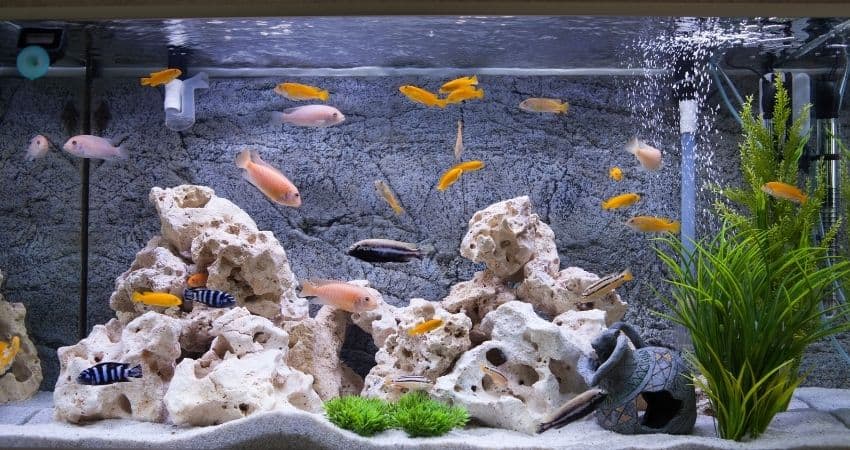
5. Christmas Moss
By a more frequent pattern of branching and slightly different leaf shapes, Christmas Moss can be described. Invest in small foods such as Amano shrimps and dose liquid fertilizer to improve their development, so that this slow-growing mouse looks the best. Christmas Moss is better obtained from other hobbyists who thrive in their aquariums in perfect conditions.
- Temperature: 65F-77F
- pH: 5.0-7.5
- Light: Low (1.5WPG) to High (3WPG+)
- Growth: Slow
- Difficulty: Beginner
Types of Artificial Aquarium Plants
Many may assume, artificial Aquarium plants will not be good enough. In our opinion, the best thing about artificial plants is you can use them in both salt and freshwater, just by cleaning them regularly. Let’s know about some artificial plants;
1. Ecoscaper Lobelia Silk Plant
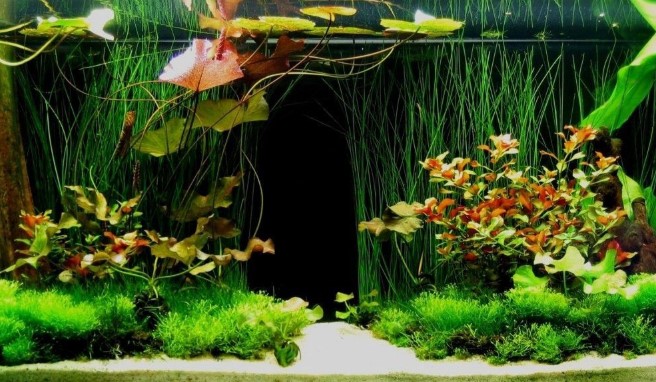
This artificial Lobelia crosses every good point for an artificial aquarium. It is very cheap, it has a strong basis and looks closely like the real thing. It’s a colored splash over many more realistic fakes as an extra incentive.
This Lobelia artificial is a perfect example of a true silk vine. The vast majority of the plants tend to be great in the tank, however.
2. CNZ Artificial 16-Inch Java Fern
CNZ is the place to look when you’re finding a one-stop shop to satisfy all your aquarium needs. There is a wide range of choices ranging from 8″ to 21″ in various forms, although this particular plant is made of 16″ Java fern.
3. Artificial Seaweed Water Plants
Authentic plants are not limited to versions of silk. These soft artificial plants of PVC algae contribute significantly to the majority of tanks. You can plant a part of your tank thickly with the whole package. They look vibrant and cheery if you buy them in green, but if you like psychedelic, there are a few other color options as well.
4. CNZ Aquarium Fish Tank Green Lifelike Underwater Plastic Plant
This commodity comes with a small ceramic base in which the plant is already rooted. This means you can just plug it into your fish tank directly without having any trouble tying the roots into your substratum. It is nice to add a natural esthetic to your aquarium at a full height of 10 inches.
Ways To Anchor Aquarium Plants
Follow these effective ways to anchor them in the gravel if you’re trying to include plants in your aquarium. The perfect addition to a tank of fish is aquarium plants because they build a lovely habitat inside them.
Follow these quick ways to anchor them in the gravel if you’re trying to include plants in your aquarium.
The perfect addition to a tank of fish is aquarium plants because they build a lovely habitat inside them. See the following hints for optimal anchoring to the ground of your aquarium!
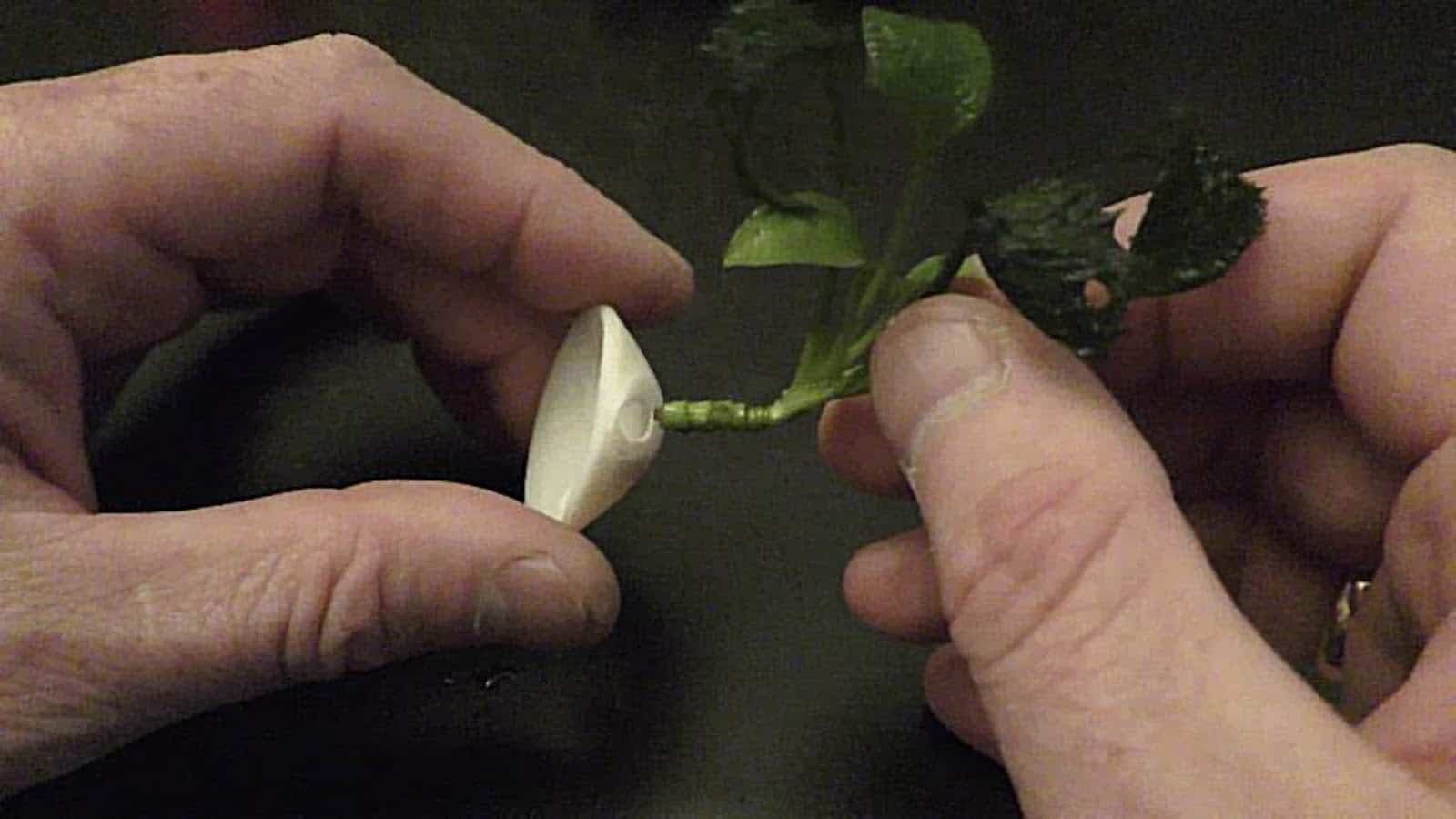
1. Kind Of Gravel For Plants
Gravel serves as a fish and plant substratum, so make it carefully. It gives your fish a hiding spot, a house for the eggs. You have to remember which fish you are holding if you are considering adding gravel. Some fish may consume small pebbles and others may be harmed by sharp gravel (betta fish).
But always be careful to remember this and pick accordingly. The reflection of water brings tension to fish, but gravel calms the fish by minimizing reflection on the water. The appearance of the fish tank can be enhanced by having multi-colored gravel.
CRUSHED CORAL is a perfect way to stabilize and improve the pH of broken coral. Typically combined with rich materials like aragonite or equivalent calcium. They are suited for shore, coral, brackish water, and tanks of cichlids.
Create gravel that is rich in nutrients including black sand fluorite. Ideal for aquarium plants and is high in nutrients and elements. It is best to add root tabs for seaweed to maximize the quality of minerals.
2. Adding Weight With Plants
The added weight of the plant helps to keep it in the water. It cannot be supported by sand alone, so you must add some light stones or pines to the rim. Do not apply weight or strain to the plant roots as root damage is likely. Any light pebbles and aquarium rocks may be added to keep them in place.
Many lovely stones can be found in many lights to dark stones that give your freshwater tanks an exquisite aesthetic. This offers the fish and plants top-level gravel that is suitable for big stones.
3. Plant Anchors
These are soft strips that can bend quickly and are supported by wrapping plants. For large aquariums of large fish, it’s preferable. You can find them in any animal store or aquarium and they are also nice in huge tanks where fish are abundant and large.
Several forms of aquarium anchors are also available online. These are only soft and bendable plumb strips that you can loop around your aquarium to keep in the water.
4. Super Glue
The primary super glue process is to bind up 2 items easily. That is why traditional superglue is renowned for preserving an aquarium for decorative plants.
The resistance to heat and moisture is another important cause of its popularity. For this cause, it can hang on practically any surface such as bricks, rocks, metalwork, plastic, glass, and most widely seen benign items in the aquarium.
However, there are many great inconveniences. It might not be feasible if you intend to stick the aquarium’s walls together. It’s nice to stick together things, not water sealing. A healthy silicone sealant can be used in your tank. It’s the only way to match the walls.
And just like that with a base, you can anchor your plant in the fish tank. But be aware of, Is the Super Glue Aquarium Safe?
5. Threading The Plants
Take a thin net of nylon and anchor it with seeds. It is convenient for plants such as moss or heifers to be anchored. It’s helpful to keep them. Set some weight on both ends to protect this thin mess. This allows the plants to remain there and lets them attach something.
It also lets them root to a position, which makes them safer when defending themselves from the fish and animals of your tank. For fish too, the pot is clean. There is no chance of strangling. You should change your beloved pot if you don’t like the pot where you bought the rose.
6. Using Sand
To make dense bedding around it to hold it, use many layers of sand. It would not encourage the occupants of the land and other fish to penetrate the sand and destroy the foundation. Sand does not normally help the vine, but it may do this with a very dense coating.
Sand is soft enough not to weigh or crush the roots, and the plants can be fairly solid if they are covered up to their foundations. In this case, a plant with long roots should be mature so that it can be fitted in the sand bed.
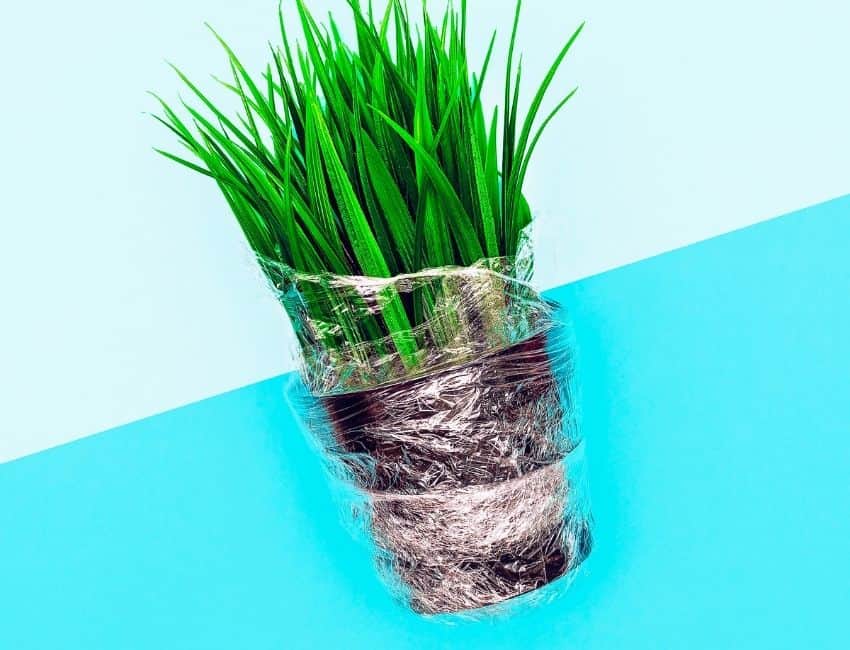
7. Plant Pots
The plants in the tank provide pots. You also can place the pot into the fish tank and allow the plant to expand. This is the best way to restore plants because the plants are in the pot already! You can put your plant in pots when you have no choice to keep it in the water. It also protects the roots.
Don’t think about the look because it gives your aquarium a special, different feel. You should apply rocks and pebbles to the plant base when it is in a container so that herbivores can avoid consuming herbivores and animals from the base.
8. Driftwood
It’s a healthy choice to anchor plants to driftwood. Wrap around the driftwood whole plant or just the base. Wood is too strong to keep it down on the ground. Find a container or bucket that is wide enough to cover the whole driftwood with dechlorinated tap water at once.
Place the driftwood in the bucket and weigh it down with large items such as rocks. Wait for 14 days before the wood is cured. It would make anchoring itself much easier for the roots.
Important Facts To Keep In Mind While Anchoring Aquarium Plants
You have to keep in mind that you are going to have live fish in your fish tank. The method of anchoring plants should not be harmful to your fish. Follow these methods.
1. Materials To Avoid
The components that crumble or alter their condition should be avoided. Be away from metals when in contact with water. Stay away from metals. Lead is something to keep away from because it is poisonous to animals and kills them.
You probably know how large you are going to have to accommodate, how many fish you are going to have, and which fish types you are going to hold in your tank.
You would have sent plenty of advice on how to look after your fish and what to do with the tank, whether you ordered your fish from a reputed retailer.
Any driftwood you buy is generally always nice because it has been treated for your tank. But always make sure that you gather wood outside of yourselves before bringing it into your tank, as untreated wood rots into water.
Just like that keep this material away from your fish tank;
- Plastic
- Ceramics.
- Anything Consumable
- Wood
- Beach Sand
- Shells, Corals, and Rocks
- Anything Degradable. …
- Your Hands.
2. Anchor Rooted Plants
A typical strategy is to hold the plant in the same place for an adequate time for the raíces to continue to mature for the plant to remain self-sufficient. The best way to do this is to round the plant with hard rocks.
You may also fasten it to something loud (wood or stones) at the bottom of the tank with a cord.
3. Anchor Without Substrate
How you are going to anchor aquarium plants depends on what you use as a hook and what crop you want to root. Bear in mind that for a plant to remain in a position where there are comparatively low tides requires something solid to tie it down.
It would possibly be dislodged for time or not expand properly if flows repeatedly strike down on the plant. That is why, when it is completely planted, you will need to know the final scale of the plant to position it properly.
4. Avoiding Substrate
However, if your tank plays too many vital positions, there are moments when you just don’t need to do so, or even without it, you’re better off. It may not be a smart idea to have substratum in your tank if you plan to hatch fish eggs and raise young fry.
If you want fish to be safe and grow well, your tank must be spotless. This includes regular water adjustments and detailed aspiration of the tank. Yet newly hatched fish are so tiny that any of them can be quickly lost.
Final Words
In your fish tank, you should now be able to anchor aquatic plants. As you know, it is important to take anchoring plants seriously. Before you put something in your tank that can alter water’s chemical composition, you can do a detailed analysis.
You will find that the plants are lighter than water after you have purchased the plants and that they float on the surface. However, most of these plants need anchoring, and this can be achieved by using the above methods.
On the ground of the pool, some fish and animals burst and the plant roots were injured. They displace the aquarium plant and do not allow it to cling to the floatable foundation.
You should use rocks, driftwood, plastic mesh, puddles, and anchors for this purpose. Please check that the anchorage that you use is sterilized and that your fish are not at risk after installation in the tank.






